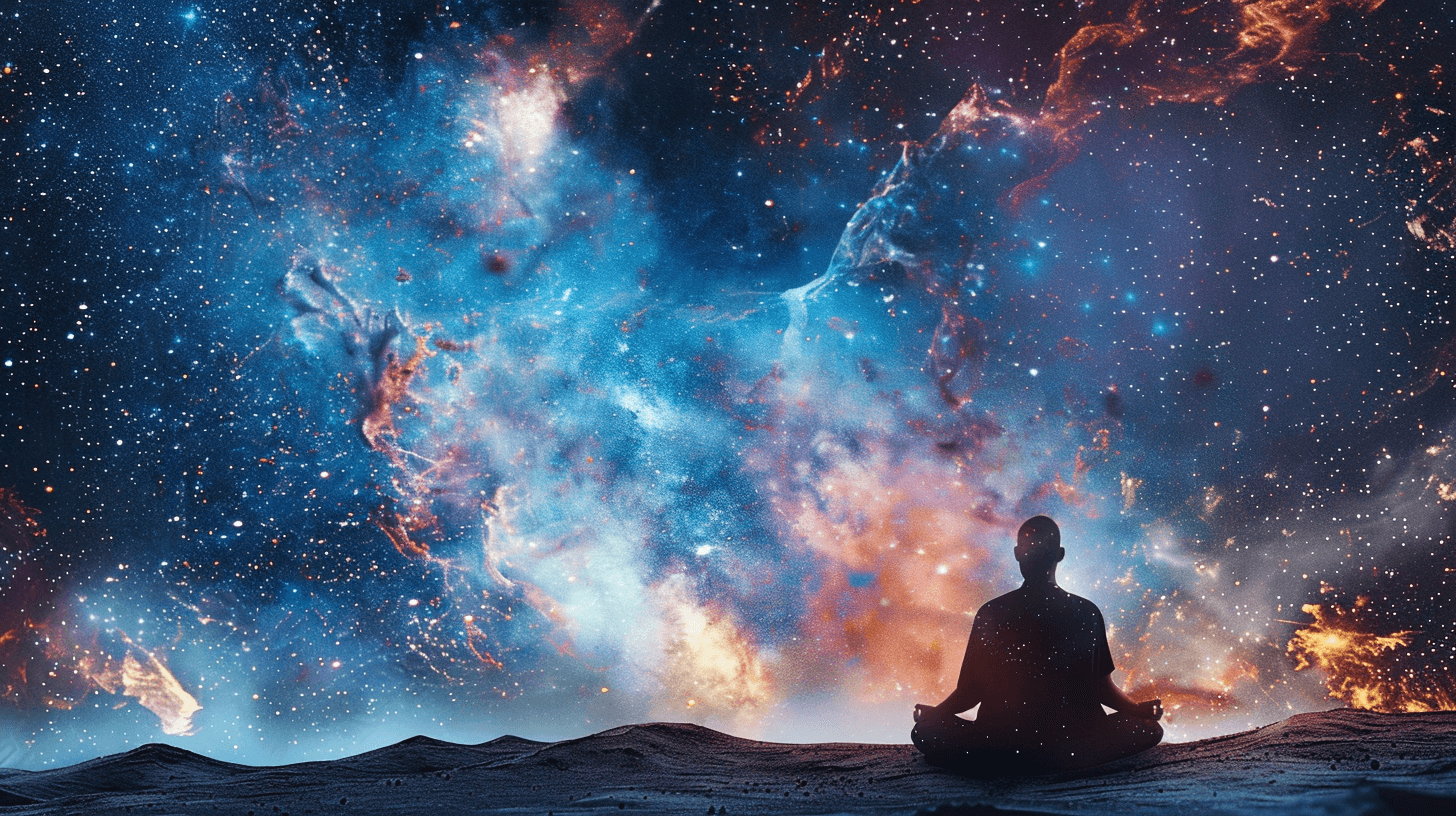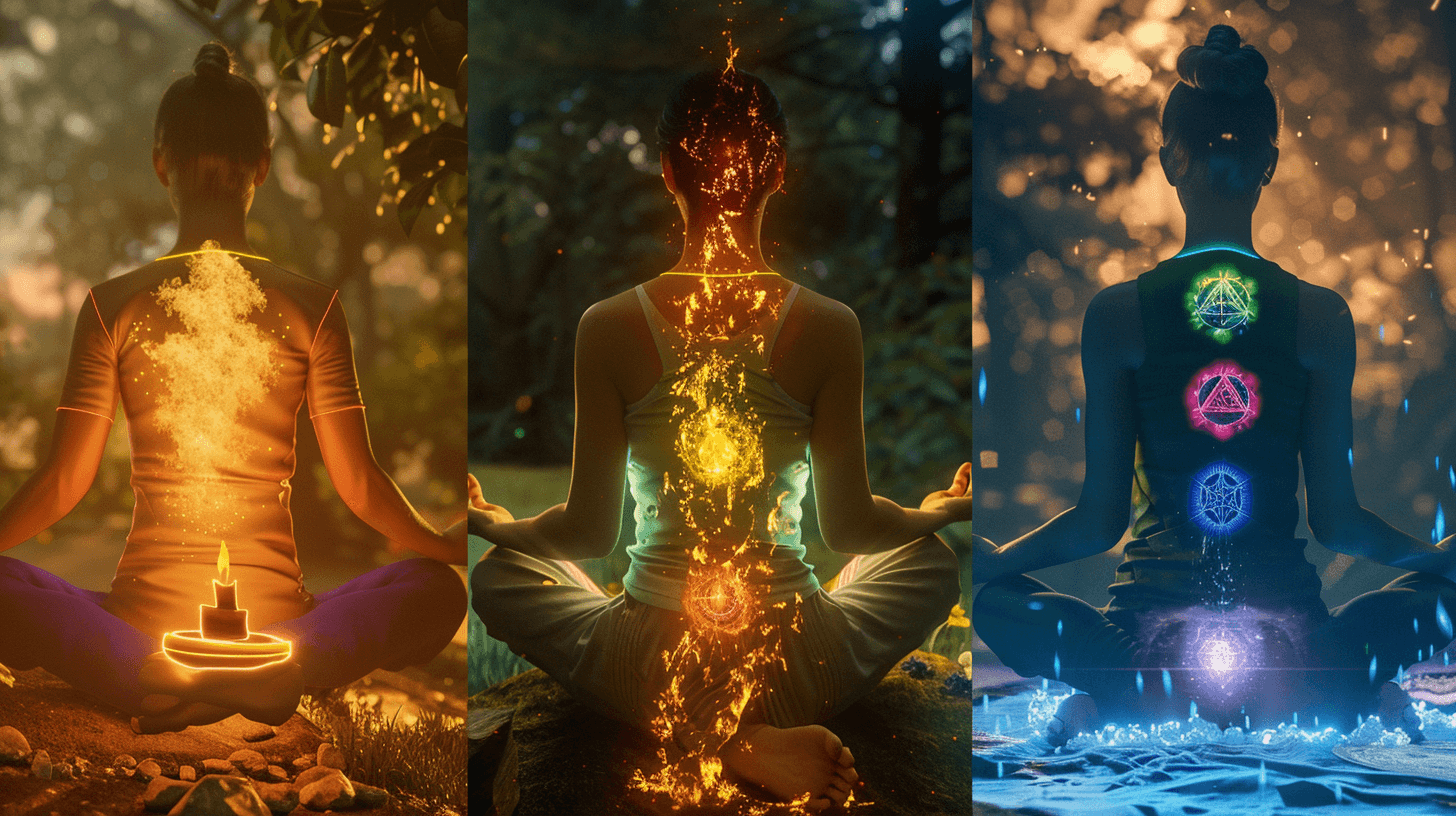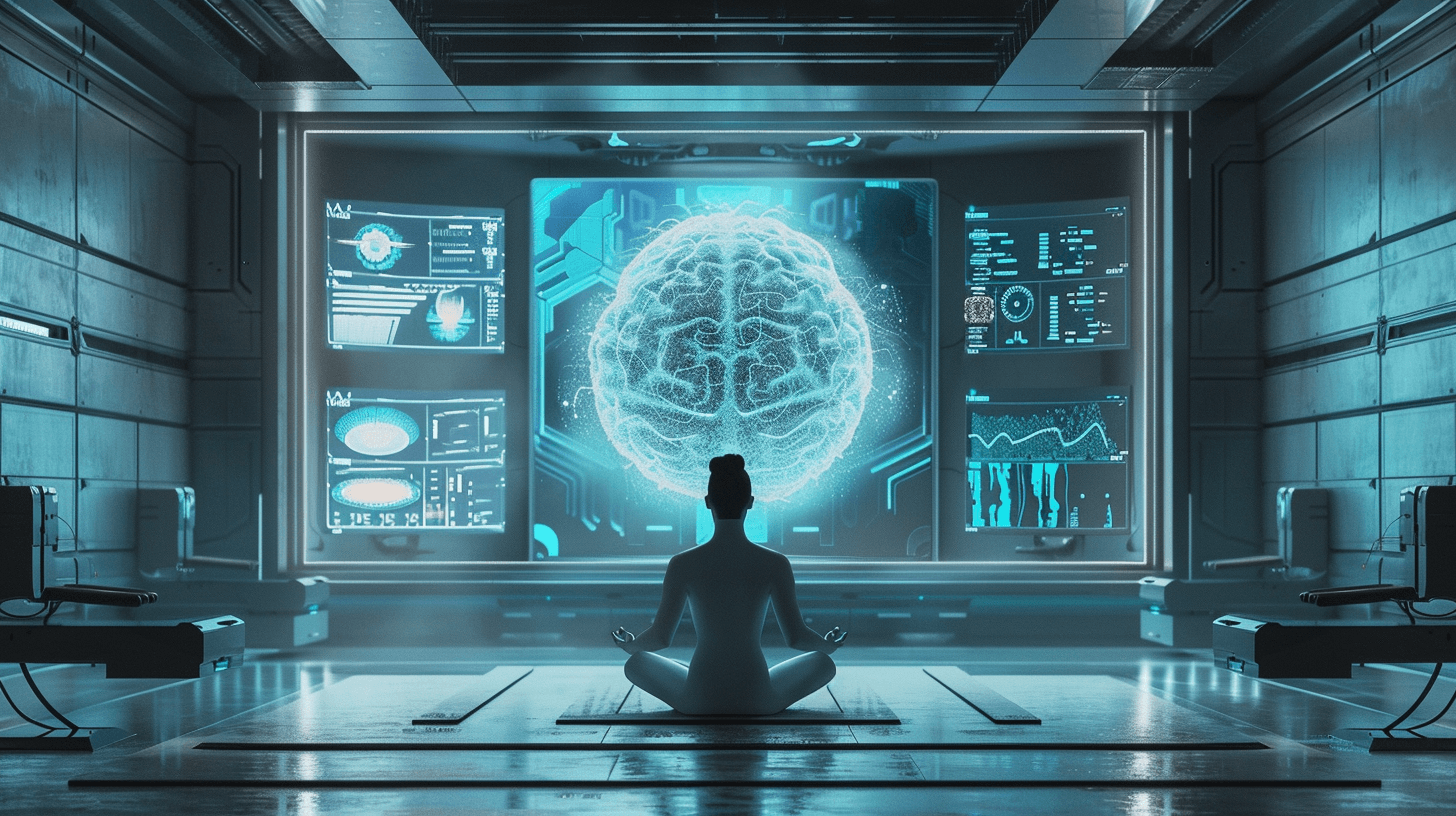Introduction

In an era of increasing complexity, stress, and distraction, the need for a deeper sense of purpose, clarity, and connection has never been more urgent. For many, meditation is not just a tool for relaxation but a profound practice capable of elevating consciousness, helping individuals transcend the ordinary and connect with a greater reality.
The search for “Meditation for Higher Consciousness Books” reflects a growing interest in accessing these higher states of awareness. This article is designed to guide readers through the fundamentals of higher consciousness, explore the role of meditation in unlocking these states, and introduce the best resources to deepen this journey. Whether you are a seasoned meditator or new to the practice, this guide will help you navigate the path to higher consciousness, offering insights, techniques, and recommendations for transformative books.
What is Higher Consciousness and How Can Meditation Unlock It?

Higher consciousness is a term used across various spiritual and philosophical traditions to describe an elevated state of awareness. It transcends the everyday ego-driven mind and taps into a deeper, more expansive realm of understanding. In many ways, it is seen as a state of being where an individual feels a heightened connection to the universe, greater clarity, and a sense of unity with all life.
At its core, higher consciousness can be understood as an awareness that goes beyond the immediate, material world. For example, Eastern traditions like Buddhism and Hinduism describe it as “nirvana” or “samadhi,” a state where individual ego dissolves, and a profound sense of peace and interconnectedness emerges. In modern psychology, higher consciousness might be explained through cognitive neuroscience as advanced forms of awareness, often connected to higher brainwave states such as alpha, theta, or gamma waves.
The Role of Meditation in Unlocking Higher Consciousness
Meditation serves as one of the most accessible and effective practices for awakening higher consciousness. By focusing attention inward, meditation creates a quiet, reflective state where distractions are minimized, allowing the mind to transcend ordinary thoughts and open the doorway to deeper insights and awareness.
Through regular practice, meditation trains the mind to let go of the egoic thought processes that cloud consciousness. It is this stillness and focus that can allow individuals to access higher consciousness, where intuition, creativity, and deeper spiritual understanding flourish. In advanced stages, meditators often describe experiencing feelings of oneness, timelessness, and even enlightenment.
Scientific Insights
Scientific studies have shown that meditation can lead to altered brain states that mirror higher consciousness. Neuroimaging studies reveal that meditation decreases activity in the default mode network (associated with self-referential thinking) and increases activity in regions responsible for empathy, awareness, and compassion. In this way, meditation facilitates a shift from ego-centered thinking to a more expansive state of consciousness, conducive to deeper understanding.
Key Meditation Techniques for Higher Consciousness

Mindfulness Meditation
One of the most popular and accessible forms of meditation, mindfulness centers on bringing full awareness to the present moment without judgment. By focusing on the breath, bodily sensations, or immediate surroundings, practitioners quiet the mind and foster a deeper sense of being. Mindfulness meditation teaches us to observe our thoughts and feelings without becoming attached to them, helping us transcend the ego’s limitations.
Transcendental Meditation (TM)
Transcendental Meditation is a mantra-based practice that allows individuals to move beyond surface-level thinking and experience a state of restful awareness. By silently repeating a mantra, practitioners enter a deep state of relaxation, where higher states of consciousness are more easily accessed. Research on TM has shown significant reductions in stress and improved cognitive function, which are conducive to higher consciousness experiences.
Vipassana Meditation
Vipassana, or “insight” meditation, is one of the most ancient forms of meditation, rooted in the Buddhist tradition. It teaches practitioners to observe their inner experiences, cultivating a deep awareness of bodily sensations, emotions, and thoughts. Over time, this heightened awareness leads to profound insights into the nature of reality and the dissolution of the self, opening the door to higher consciousness.
Chakra Meditation
In traditions like Hinduism and Tantra, chakra meditation is used to activate and balance the body’s energy centers. By focusing on specific chakras, such as the third eye (associated with intuition) or the crown (associated with higher consciousness), practitioners can access spiritual energy that deepens their meditative experience and elevates consciousness.
Top 10 Books for Meditation and Higher Consciousness

The Power of Now by Eckhart Tolle
Eckhart Tolle’s seminal work emphasizes living fully in the present moment. Through the lens of mindfulness, Tolle reveals how attachment to the past and future blocks higher consciousness and how embracing the present opens the door to spiritual awakening.
The Untethered Soul by Michael A. Singer
This book takes readers on a journey inward, examining the limitations of the ego and the boundless nature of the soul. Singer’s insights into consciousness guide readers toward spiritual liberation and deeper awareness.
Be Here Now by Ram Dass
A classic in spiritual literature, Be Here Now blends Eastern spirituality with Western sensibility. It offers practical guidance on meditation and higher consciousness, showing how mindfulness and surrender can unlock the mysteries of the universe.
Autobiography of a Yogi by Paramahansa Yogananda
Yogananda’s spiritual autobiography explores his journey toward enlightenment and offers profound insights into the power of meditation and divine consciousness.
Waking Up by Sam Harris
Sam Harris, a neuroscientist and philosopher, bridges science and spirituality in this guide to meditation. He argues that secular meditation can offer the same profound consciousness shifts traditionally achieved through spiritual practices.
The Book of Secrets by Osho
Osho’s expansive work on meditation offers practical techniques for transcending the mind and entering states of higher consciousness. He explores various forms of meditation, from silent reflection to active methods.
The Art of Living by Thich Nhat Hanh
Thich Nhat Hanh’s teachings on mindfulness provide a gentle, yet powerful approach to meditation and spiritual growth. His reflections on mindfulness lead to a calm, centered state of being.
A New Earth by Eckhart Tolle
In this follow-up to The Power of Now, Tolle delves into collective consciousness, exploring how individual awakening contributes to the greater evolution of humanity.
Becoming Supernatural by Dr. Joe Dispenza
Dispenza blends neuroscience and meditation in this guide to unlocking human potential. He provides actionable insights on how meditation can shift brain states and open the door to profound consciousness expansion.
The Seven Spiritual Laws of Success by Deepak Chopra
Chopra’s timeless wisdom provides seven principles that connect spiritual growth with material success. His teachings on mindfulness and the Law of Dharma open pathways to self-realization and higher consciousness.
The Science Behind Meditation and Consciousness Expansion

Meditation fundamentally alters how the brain operates, especially in terms of brainwave activity. Typically, in our everyday waking state, the brain predominantly produces beta waves, which are associated with active thinking, problem-solving, and external focus. While necessary for daily tasks, beta waves often correlate with stress, anxiety, and a fragmented state of awareness.
Meditation, however, facilitates a shift from beta to alpha waves, which correspond to a relaxed and focused state of mind. Alpha waves emerge when we’re calm, reflective, and internally focused—ideal conditions for the cultivation of mindfulness and present-moment awareness. Deeper meditation practices can produce theta waves, which are linked to creativity, intuition, and subconscious exploration. Theta states are often where profound insights and breakthroughs occur, as the mind taps into deeper reservoirs of wisdom and understanding.
For the most advanced meditators, delta waves can arise, a state typically associated with deep, restorative sleep. Yet in meditation, individuals can experience delta waves while maintaining full awareness, giving rise to transcendental experiences, where the boundaries of the self seem to dissolve and a sense of oneness with the universe emerges. This altered state of consciousness allows individuals to access the highest levels of creativity, clarity, and spiritual connection.
Neuroplasticity and Spiritual Awakening
Meditation does more than temporarily change brainwave activity—it rewires the brain itself. Neuroscientific research has demonstrated that consistent meditation practice leads to neuroplastic changes, or the brain’s ability to reorganize itself by forming new neural connections. Meditation strengthens regions of the brain associated with self-awareness, empathy, and compassion, such as the prefrontal cortex. These areas become more developed and active, leading to a deeper sense of connection with oneself and others.
Conversely, meditation reduces the size and activity of the amygdala, the brain’s center for fear, stress, and anxiety. With regular practice, meditators are less reactive to stressors, as their emotional regulation improves. This reshaping of the brain facilitates the journey toward spiritual awakening by creating a mental environment more conducive to higher consciousness—calm, empathetic, and less driven by fear.
These neuroplastic changes not only affect emotional resilience but also pave the way for long-term spiritual growth. As individuals cultivate mindfulness and compassion through meditation, they naturally begin to embody higher consciousness in their daily lives, making them more attuned to spiritual insights and inner transformation.
Hormonal and Emotional Balance
Another significant impact of meditation is its ability to balance key hormones, such as cortisol and serotonin. Cortisol, the stress hormone, is known for driving the fight-or-flight response. In today’s fast-paced world, many people operate with chronically elevated cortisol levels, which contribute to anxiety, depression, and a scattered mind.
Meditation lowers cortisol levels, allowing the body to enter a more relaxed state. This not only alleviates stress but also enhances the body’s natural healing processes. Furthermore, meditation increases the production of serotonin, often referred to as the “happiness hormone.” Elevated serotonin levels improve mood, emotional stability, and overall well-being, which are essential for maintaining a state of inner peace.
The regulation of these hormones through meditation fosters a more balanced emotional landscape, enabling practitioners to experience the clarity and stillness necessary for higher states of consciousness. With mental clutter reduced, individuals are better able to access deeper truths and insights about themselves and the universe.
Exploring Meditation and Consciousness Across Different Spiritual Traditions

Buddhism
Buddhism places meditation at the core of its spiritual practice, with mindfulness and concentration being the keys to attaining enlightenment. Vipassana, or “insight meditation,” encourages practitioners to observe their thoughts, emotions, and bodily sensations with non-attachment. This process of observation reveals the impermanence of all things, leading to a dissolution of the ego and a realization of higher truths.
Zen Buddhism, another prominent branch, emphasizes “zazen,” or sitting meditation, where practitioners sit in stillness and observe the present moment. Zen teaches that enlightenment, or “satori,” is not a far-off state but can be accessed through complete immersion in the here and now. This realization of oneness and interconnectedness is a profound step toward higher consciousness.
Hinduism
In Hinduism, meditation is integral to achieving self-realization and uniting with the divine. Practices such as Raja Yoga and Kundalini meditation focus on controlling the mind and awakening spiritual energy. Raja Yoga, often referred to as the “royal path,” incorporates meditation as a way to still the fluctuations of the mind and access the soul’s true nature.
Kundalini meditation, on the other hand, involves awakening the dormant spiritual energy at the base of the spine, known as “kundalini.” Through focused breathwork, mantras, and visualization, this energy rises through the chakras, or energy centers, culminating in higher consciousness and spiritual enlightenment.
Taoism
Taoist meditation is rooted in the philosophy of harmony with the Tao, or the natural flow of the universe. Taoist practitioners seek to cultivate “wu wei,” or effortless action, by aligning themselves with the cosmic order. Through quiet reflection and breath control, Taoist meditation aims to dissolve the ego and merge individual consciousness with the Tao.
This meditative practice not only promotes physical health and longevity but also opens the pathway to cosmic consciousness, where the individual transcends their limited sense of self and experiences the universe as a unified whole.
Western Mysticism
Western mystical traditions also emphasize the role of meditation in accessing higher consciousness. Christian contemplative practices, such as centering prayer, invite practitioners to quiet the mind and open the heart to divine presence. Mystics like St. Teresa of Avila and John of the Cross describe how deep meditation leads to a union with God, transcending the duality of self and the divine.
Similarly, Kabbalistic meditations in Judaism aim to connect the practitioner with the higher spiritual realms. By meditating on sacred texts and divine names, Kabbalists seek to understand the mysteries of creation and experience direct communion with God.
How to Integrate Meditation into Daily Life for Lasting Change

Consistency and Daily Habits
For meditation to facilitate lasting transformation, it must become a regular part of daily life. Building consistency requires creating a dedicated time and space for meditation, where distractions are minimized, and focus is enhanced. Many practitioners find that setting aside time each morning establishes a foundation of mindfulness and sets a positive tone for the day ahead.
Consistency is not about long hours of meditation but rather about the quality and regularity of practice. Even short daily sessions can accumulate and lead to significant shifts in consciousness over time. Setting intentions before each session, such as focusing on mindfulness or compassion, helps anchor the practice and ensures that meditation remains purposeful.
Mindful Living
Meditation is not confined to a sitting practice. Its benefits extend into daily activities, transforming the way we engage with the world. Mindful living invites individuals to bring meditative awareness into everyday tasks—whether walking, eating, or even interacting with others. This integration of mindfulness cultivates a heightened sense of presence and allows higher consciousness to permeate all aspects of life.
Mindful eating, for example, encourages individuals to fully experience the textures, tastes, and sensations of food, fostering gratitude and awareness of nourishment. Similarly, mindful communication leads to deeper, more compassionate connections with others. By living with mindful intention, individuals not only experience greater inner peace but also contribute positively to their external environments.
Conclusion: Embarking on Your Journey Toward Higher Consciousness

Meditation for higher consciousness is not a one-time event but an ongoing process of self-discovery and transformation. As you commit to the practice, your awareness will deepen, and your connection to the universe will grow stronger. Higher consciousness is a journey that unfolds over time, revealing new layers of insight, compassion, and spiritual awakening.
Each step along the way offers the opportunity to release limiting beliefs, transcend egoic patterns, and embrace a more expansive state of being. The journey toward higher consciousness is both individual and universal, as your personal growth contributes to the collective awakening of humanity.
Empowering Action
The tools and insights provided in this article offer a roadmap for elevating your consciousness through meditation. Whether you choose to explore mindfulness, transcendental meditation, or one of the other techniques mentioned, the path is yours to walk. Each practice is a doorway to deeper understanding and spiritual evolution.
To further your journey, explore the recommended books and resources that delve into the profound mysteries of higher consciousness. These books serve as valuable guides, offering wisdom, techniques, and inspiration for continued growth. Embrace the process, commit to your practice, and watch as your consciousness expands, leading to a more enlightened and fulfilled life.







